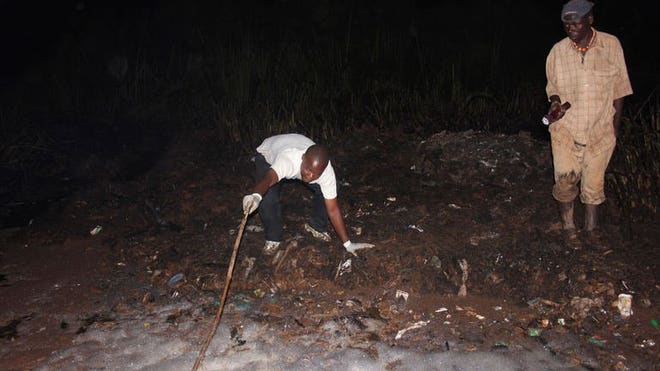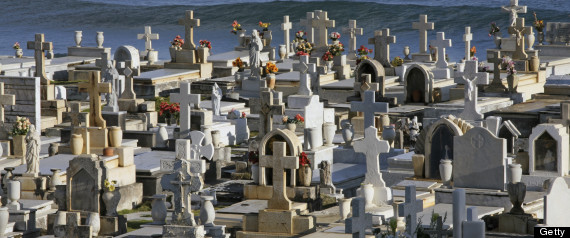
The man who spends his days surrounded by dead Afghan soldiers waits in a faded shipping container across from the morgue. But Noori rarely waits long before he is called to work.
Inside the container is a bed, a fan and a hose for washing the bodies. He has prepared at least a thousand of them for burial over the past decade: victims of roadside bombs, gunshots, mortar rounds and disease, delivered to him in all the shapes death takes.
Noori, 33, removes the soldiers from identical wooden coffins that are draped in Afghanistan’s flag, and he performs his duty, preparing each for burial in the Islamic tradition. He washes off blood and dirt, sprinkles perfume and covers each in a white sheet, or kafan. That’s how their families will see them when they make it home.
What Noori sees first is much more bracing — a relentless procession of bodies just off the battlefield. He takes anti-anxiety medication to help him sleep. He doesn’t tell his family anything about his job at one of the Afghan military’s busiest medical centers, Kandahar Regional Military Hospital.
In Washington, questions about the future of Afghanistan are often phrased in terms of the Taliban’s strength and the Afghan army’s fighting ability. Noori’s perch on the war doesn’t provide clear answers to those impossibly large questions. But it has made him a front-line witness to the massive human cost associated with what’s formally articulated as a “military transition."
As his country’s army inherits the war from the United States and NATO, there are far more of those bodies than ever before. More than 250 Afghan soldiers and police are now killed in Afghanistan every month, many of them in the violent south where Noori works.
On that subject, Noori takes a long view. “The army will keep fighting, and men will keep dying, until there is peace," he said.
Noori was once employed by the group responsible for the death and destruction he sees on a daily basis. For several years, beginning when he was 19, he worked for the Taliban.
In Kandahar, the province where the Taliban was born, the only job he could find was sweeping the floors of the former regime’s main hospital. It was nearly two years before Sept. 11, 2001.
When war came to Afghanistan and the regime was toppled, Noori swept the same floors for the new Afghan government. Because he was a low-level worker, his previous allegiance was forgiven. Soon, he was watching government fatalities trickle in.
The man then in charge of washing bodies needed assistance. It wasn’t an alluring job, but it was an important one, Noori thought.
“It’s religious work," he recalls thinking to himself.
He volunteered. Since then, Noori, typically clad in medical scrubs and an Afghan army windbreaker, has handled corpses nearly every day for the past decade.
“I’ve seen more death than anyone," he said. “The bodies keep coming."
He gets middle-of-the-night phone calls beckoning him to the hospital so that bodies can be washed and buried as soon as possible, according to Muslim custom. He knows exactly what a bomb or a machine gun or a rocket-propelled grenade can do to a human body. Some soldiers look serene, almost untouched, and others don’t look human at all.
He knows to expect anything when he removes the lid of the coffin. Once he saw his neighbor and close friend, Hashmat. Noori mourned quietly while doing his job.
“Anyone would get angry to see a friend like that," he said.
As more Afghan soldiers die, Noori finds himself close to some of the worst violence. His morgue is the destination for those killed in contested swaths of the south and southwest, including several of Afghanistan’s bloodiest districts.
His colleagues ask how he’s holding up, and he often shrugs them off.
“No matter what the body looks like, he does his job," said Sgt. Mohammad Hussein, the head of the morgue. “It’s difficult."
The truth is that Noori can’t sleep without medication. He dispassionately describes himself as “physically and mentally exhausted." He keeps the bed in the storage container, he says, because after washing three or four bodies, he needs to lie down.
This year, just after the Taliban announced the beginning of its “spring offensive," bodies came in one after the next. One afternoon, an ambulance arrived from Helmand Province carrying three dead, all killed by separate makeshift bombs.
Noori was suddenly frenzied. He called to a group of soldiers for help lifting the bodies for washing. But the men walked away brusquely.
“They don’t have the courage to help," he said to himself as he worked alone.
There is a tenderness to the way Noori does his job, washing the men’s hair as if he were caring for a small child. But the circumstances can be brutal. Sometimes, he has to wash severed limbs separately. Sometimes, the clean white sheets turn red as soon as they’re placed on bodies. Sometimes, he sees fresh scars where doctors tried to operate, but failed or ran out of time.
On warm days, all the death and heat make the job nearly unbearable.
Spring and summer are when the fighting is most intense, particularly this year, when U.S. troops are doing minimal combat and Afghan soldiers are dying at a higher rate than Western forces ever did.
“In the summer, it’s too much," Noori said.
Questions about the Taliban’s strength do occupy Noori’s mind. Because he is an employee of the Afghan military but not a soldier, he lives off base, on the outskirts of Kandahar City. Every day, he drives one hour to Camp Hero, the sprawling military installation where the hospital is located.
He knows his unguarded living conditions make him vulnerable to insurgents, especially former Talibs, who target those working for the Afghan government. His colleagues, who live at Camp Hero, worry about him.
“If they find him, they will kill him immediately," Hussein said.
But Noori has taken an approach to his own life that seems to blend defiance and fatalism. He says he isn’t scared of the Taliban, but that he’s ready for death when death comes.
When the hospital calls him in during early morning or late nights, he slips out of bed quietly so that his wife does not wake. He has never described his job to her in any detail, because he worries she would begin to associate his early morning departures with the death of soldiers.
“She wouldn’t be able to take it psychologically," said Noori, who has an infant daughter.
Noori says he can take it, though he thinks often of the families who will be on the receiving end of his work, in whatever Afghan province the soldier called home.
“They deserve to see the bodies clean and neat," he said. “They are the ones who have suffered."
Wednesday 3 July 2013
http://www.bendbulletin.com/article/20130702/NEWS0107/307020369/








